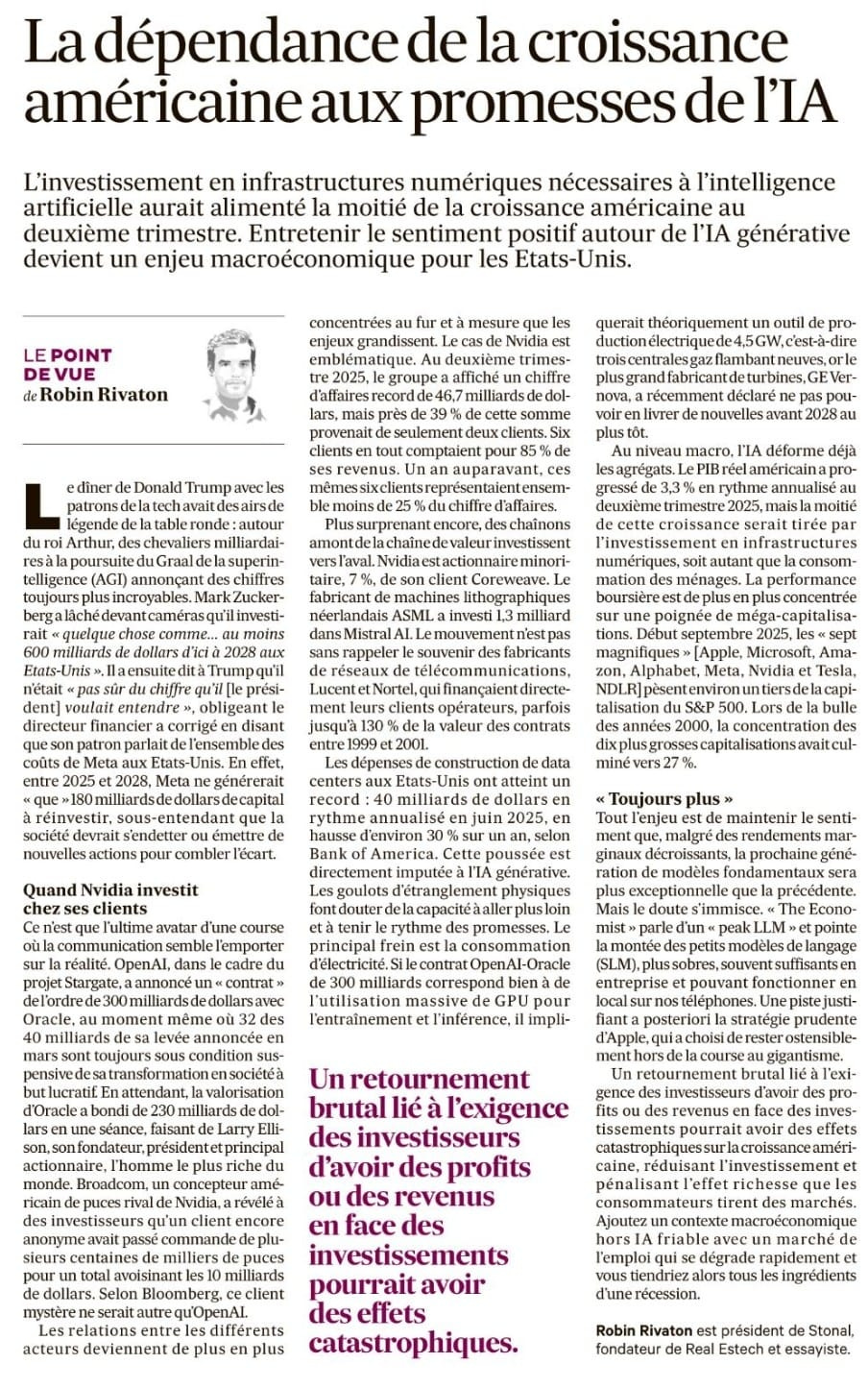Donald Trump’s dinner with Big Tech chiefs had the feel of Arthurian legend: a king at the head of the table, billionaire knights questing for the Holy Grail of AGI, and ever more extravagant numbers. On camera, Mark Zuckerberg declared he would “invest something like… at least $600 billion by 2028 in the United States.” He then told Trump he “wasn’t sure what number [the President] wanted to hear,” prompting his CFO to clarify that he meant Meta’s total U.S. costs. In reality, between 2025 and 2028 Meta would generate only about $180 billion in capital to reinvest, implying the company would need debt or new equity to bridge the gap.
It is merely the latest episode in a race where rhetoric keeps outrunning reality. OpenAI, under the Stargate project, trumpeted a “contract” on the order of $300 billion with Oracle, even as 32 of the $40 billion announced in March remains contingent on the group’s conversion to a for-profit structure. In the meantime, Oracle’s market value leapt by $230 billion in a single session, briefly making founder, chairman, and major shareholder Larry Ellison the richest man in the world. Broadcom told investors that a still-unnamed client had ordered several hundred thousand chips for roughly $10 billion. According to Bloomberg, the mystery buyer is OpenAI.
As the stakes rise, relationships are concentrating. Nvidia is the emblem. In the second quarter of 2025, the company posted a record $46.7 billion in revenue, but nearly 39 percent came from just two customers. Six customers accounted for 85 percent of sales. A year earlier, those same six represented less than 25 percent.
More surprising still, upstream nodes are investing downstream. Nvidia owns about 7 percent of its customer CoreWeave. Dutch lithography champion ASML put $1.3 billion into Mistral AI. The pattern recalls the telecom bubble, when network equipment makers Lucent and Nortel directly financed carriers, in some cases up to 130 percent of contract value between 1999 and 2001.
U.S. data center construction has hit a record: $40 billion at an annualized pace in June 2025, up roughly 30 percent year on year, according to Bank of America. Generative AI is the driver. Physical bottlenecks now cast doubt on how much further the build-out can go and whether the pace of promises can be met. The chief brake is electricity. If the $300 billion OpenAI–Oracle deal truly implies massive GPU use for training and inference, it would require on the order of 4.5 GW of generation capacity, roughly three brand-new gas plants. Yet GE Vernova, the largest turbine maker, recently said it cannot deliver new units before 2028 at the earliest.
At the macro level, AI is already distorting aggregates. U.S. real GDP grew 3.3 percent annualized in the second quarter of 2025, with about half attributed to digital-infrastructure investment, on par with household consumption. Equity performance is ever more concentrated among a handful of mega-caps. In early September 2025, the “Magnificent 7” made up about one third of the S&P 500’s market capitalization. At the peak of the 2000 bubble, the top ten stocks reached around 27 percent.
The whole game is to sustain the belief that, despite diminishing marginal returns, the next generation of foundation models will outshine the last. Doubt is creeping in. The Economist speaks of a “Peak LLM” and notes the rise of small language models that are leaner, often sufficient for enterprise tasks, and capable of running locally on phones. That trend retroactively vindicates Apple’s conspicuously cautious stance outside the bigness race.
A sharp turn, driven by investors demanding profits or revenue to match the capex, could hit U.S. growth hard, curbing investment and denting the wealth effect consumers draw from markets. Add a shaky non-AI macro backdrop, with a rapidly weakening labor market, and you have all the ingredients for a recession.
[Update on 2025/09/24: Nvidia enters a $100 billion financing arrangement with OpenAI, providing 10 gigawatts of AI infrastructure and reportedly taking an equity stake.]


